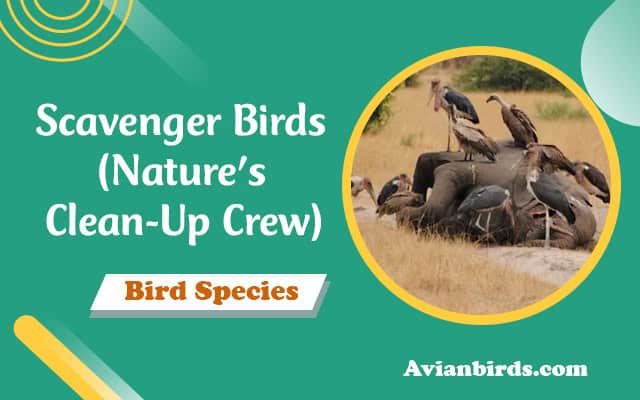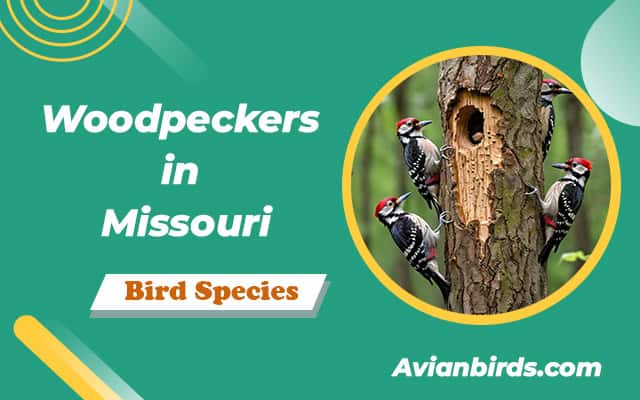13 Types of Scavenger Birds (Nature’s Clean-Up Crew)
Did you know scavenger birds eat over 70 million tons of dead animals every year? This shows how important they are for keeping our world balanced. Birds like vultures, crows, and storks help by cleaning up and recycling nutrients.
Let’s explore the world of these amazing birds. We’ll learn how they survive and help our environment. They have special ways of living and working together in different places.
The Importance of Scavenger Birds
Scavenger birds, like vultures, do more than clean up trash. They play a key role in keeping our ecosystems healthy by eating dead animals and stopping harmful pathogens from spreading.
The Role in Ecosystems
These birds are important in food webs. They help move energy around ecosystems. For example, Griffon vultures eat a lot of carrion, helping nature work better.
Their work also prevents disease, which is good for both people and animals and makes our ecosystems healthier.
How They Prevent Disease
Scavenger birds stop diseases by getting rid of dead animals. Without them, diseases like rabies can spread more. This is bad for both animals and people.
So, saving these birds is crucial. It helps keep us and our ecosystems safe from diseases.
Vultures: Nature’s Cleanup Crew
Vultures are amazing creatures that keep our world clean. In South Carolina, you can find Turkey Vultures and Black Vultures. They eat carrion, stopping diseases from spreading. Their work is vital for our planet’s health.
Vulture Species Overview
Vultures are divided into Old World and New World types. The Turkey Vulture and Black Vulture are New World birds. There are many vultures around the world, like the California Condor and the Andean Condor. The California Condor is rare and only found in California. The Andean Condor is the biggest flying bird, seen over the Andes.
In Africa, vultures like the White-backed Vulture and the Lappet-faced Vulture add to the variety. They all play a big role in our world.
Unique Adaptations of Vultures
Vultures have special features that help them find and eat carrion. They can see and smell from far away. Their strong stomach acid breaks down tough meat and bones.
This allows them to eat carrion safely. They can eat up to 20% of their body weight in one meal, which is important for their survival and for the health of our ecosystems.
California Condor: A Conservation Success
The California Condor is a great example of saving an endangered species. These birds were once very close to disappearing, but thanks to hard work over the years, their numbers are growing again.
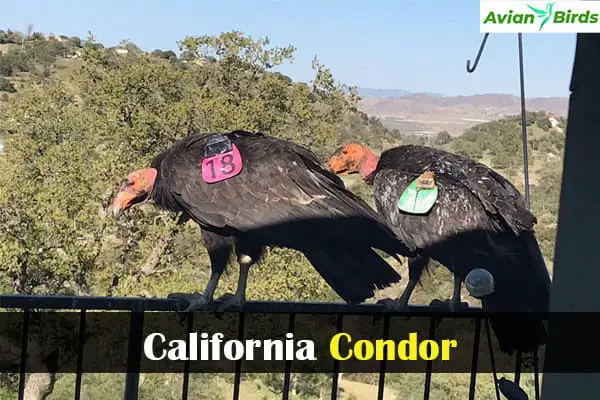
History and Habitat
In the 1980s, only 22 California Condors were left. These huge birds live in California and Arizona. They like open lands, pine forests, and mountains to find food.
Conservation Efforts
In 1979, a special breeding program for condors was started. The U.S. Fish and Wildlife Service and others helped. By 2022, there were 561 condors, with 347 flying free.
In 2008, a big win was reached. More condors were flying free than in captivity. But, they still face dangers like losing their homes and being hunted.
In 2018, a sad event happened when Condor 526 was shot. This shows we must keep working to save these birds. Our goal is to have three wild populations and one in captivity.
| Year | Population Size | Key Milestone |
|---|---|---|
| 1982 | 23 | Critical low point for the California Condor |
| 1994 | 100+ | Captive condors laid over 100 eggs |
| 2008 | More than 200 | More condors flying in the wild than in captivity |
| 2017 | 460+ | Continued growth in the wild population |
| 2022 | 561 | Total population, with 347 in the wild |
Turkey Vulture
The Turkey Vulture is a well-known scavenger bird in North America. It has a bald red head and long wings. These features help it find food and look different from other birds.
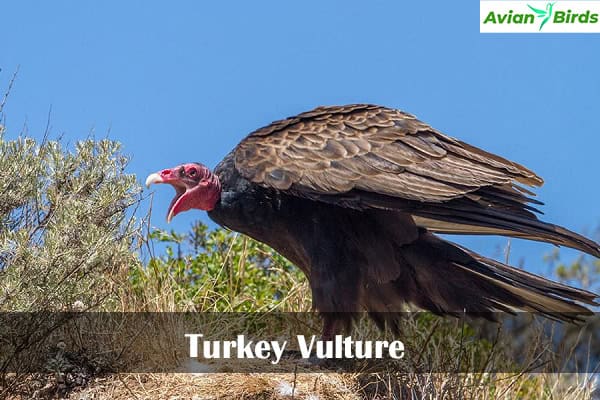
Identification and Features
You’ll see a Turkey Vulture with its dark brown body and two-toned wings. Its wings have feathered tips, making them look bigger. It can spot food from a mile away with its sharp eyes.
It also has a great sense of smell. This helps it find food hidden in forests.
Behavior and Diet
Turkey Vultures are interesting to watch. They eat the remains of mammals and sometimes reptiles, birds, amphibians, and invertebrates. Their strong stomach acids let them eat carrion safely.
They start breeding in spring and use the same nest site for many broods. The young fly for the first time at 10 to 11 weeks.
Understanding Turkey Vultures is key to appreciating their role. They keep ecosystems healthy by eating dead animals. This helps prevent disease.
| Feature | Details |
|---|---|
| Wingspan | Up to 6 feet |
| Diet | Mainly carrion (mammals, reptiles, birds, amphibians, invertebrates) |
| Breeding Season | Spring |
| Independence Age | 3 months |
| First Flight Age | 10-11 weeks |
| Infection Resistance | Highly resilient to pathogens |
Black Vulture: Characteristics and Habitats
The Black Vulture is a fascinating bird in the scavenger world. Its unique looks and behaviors help it live in many places. We see how they work together when they find food, showing their competitive side.
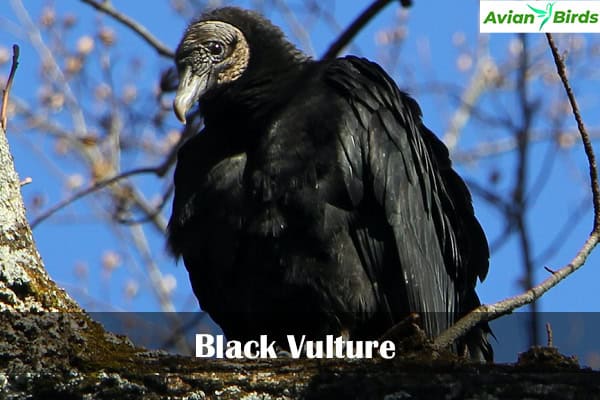
Social Structures in Feeding
Black Vultures live in groups, usually in woods. They fly together during the day, looking for food. When they find a carcass, they work together.
They push other birds, like Turkey Vultures, away. Even though they don’t smell great, they follow Turkey Vultures to find food. This shows how they rely on each other in their world.
Interaction with Other Scavengers
Black Vultures have interesting ways of interacting with other birds. Even though Turkish vultures are more common in the U.S., Black Vultures are more common in the West. They share food sites with Turkey Vultures, trying to be the boss because they have more numbers.
They find food near roads and landfills, which helps them meet other birds. People can see this at places like Route 7 and Route 84 in Danbury, Connecticut. There, they compete for food.
King Vulture
The King Vulture (Sarcoramphus papa) is a stunning bird with a colorful appearance. It plays a key role in tropical habitats. Found in Central and South America, it is often seen in rainforests like Belize’s Cockscomb Basin Wildlife Sanctuary.

They have striking colors that make them stand out. Their environment is lush greens and browns. This makes them one of the most visually appealing scavengers.
Colorful Appearance
King Vultures have vibrant plumage. Their colors range from white and black to yellow, orange, and red. This coloration is not just beautiful but also helps them communicate.
Their colors show their place in the scavenger hierarchy. This is important in their social interactions.
Feeding Habits and Habitat
These vultures are key to nutrient recycling in ecosystems, especially in Belize. Their strong beaks allow them to strip carcasses clean in minutes, which helps prevent disease and keeps the ecosystem balanced.
In their tropical habitats, they play a vital role. They show that the ecosystem is thriving, offering a healthy mix of prey for scavengers.
| Characteristic | Details |
|---|---|
| Overall Length | 67 to 81 cm (26–32 in) |
| Weight | 6 to 10 pounds |
| Lifespan | Up to 30 years in captivity |
| Breeding Season | During the dry season |
| Incubation Period | 55 to 58 days |
| Chick Dependency | Up to 8 months, sometimes staying for 2 additional years |
Understanding the King Vulture’s role in tropical ecosystems is key. It shows why we must protect these birds. They are a sight to see and crucial for the ecosystem’s health.
Bearded Vulture
The Bearded Vulture, also known as the Bonebreaker, is unique in the bird world. It eats 70-90% bones. This scavenger drops bones from high up to get to the marrow inside.

This shows its cleverness and strength. It lives in the mountains of Europe, Africa, and Asia.
Unique Diet and Foraging Techniques
The Bearded Vulture mainly eats bones from big animals. It finds food in places like the Pyrenees and Himalayas. It uses special ways to find and eat bones.
For example, it flies high and drops bones on rocks to open them. This method is amazing.
This diet has helped the Bearded Vulture survive for thousands of years. But due to habitat loss, it’s now Near Threatened. We need to help protect it so it can keep flying.
Marabou Stork
The Marabou Stork is a remarkable scavenger found in urban areas. It shows incredible adaptability, thriving in places where natural habitats are scarce. These birds are common in cities and play a key role in urban ecology through scavenging.

Adaptation to Urban Environments
Urban areas pose challenges and opportunities for wildlife. The Marabou Stork has moved to areas rich in human waste. Listed as “Least Concern” by the International Union for Conservation of Nature, it thrives where others struggle. Its adaptability is truly remarkable.
Feeding Behavior
The Marabou Stork’s feeding habits are interesting. They eat various foods, including carrion, scraps, and even feces. Their diet also includes fish, small mammals, and reptiles. In cities, they search through garbage dumps, showing how they use human resources.
Marabou Storks often gather in large groups. This helps them find better places to eat and nest. Their social behavior is a key part of their success.
Scavenger Birds: Diversity Beyond Vultures
Vultures get a lot of attention, but we must also look at crows and ravens. These birds are key to many ecosystems. They have special skills that help them find food in different places.
Crows and Ravens
Crows and ravens are very smart. They know how to find food. They use their sharp eyes and brains to find carrion and other food.

They can live in many places, from cities to countryside. This makes them very adaptable.
Other Notable Scavenger Species
There are many other scavenger birds, too. Some gulls find food by the sea, and magpies and jays do the same in forests.
These birds work together to find more food. This teamwork helps them survive. Learning about these birds shows how important they are to our world.
Ecological Niche of Scavengers
Scavenger birds are key to keeping nature in balance. They eat dead animals, stopping waste from building up. This keeps our environment healthy and shows their big role in recycling nutrients and food.
The Balance of Nature
Scavengers like vultures and crows clean up nature, keeping ecosystems from becoming overrun by rot. In cities, they help manage waste, showing their importance even in busy places.
Impact on Food Resources
Scavengers do more than clean up. They help other animals find food by removing dead bodies. Without them, food would be scarce, and their work is crucial for biodiversity.
But, when vultures disappear, other animals, like stray dogs, take over. This shows how delicate the balance is. Scavenger birds are essential for a healthy world.
Threats to Scavenger Bird Populations
Scavenger birds face many dangers that hurt their survival and role in nature. We must act fast to save these vital birds.
Human Impact and Habitat Loss
Humans harm scavenger birds by destroying their homes. Poisoning birds is a big problem, especially for vultures. For example, vultures in the Iberian Peninsula have been hurt a lot by this.
Vultures almost disappeared in Portugal. Now, only 206 pairs live in Spain. Wildfires also damage vulture homes, making it hard for them to breed.
Not enough food is another big problem. Rules on throwing away dead animals make it hard for vultures to find food. This is a big challenge for their survival.
Humans disturbing vultures when they are breeding also hurts their numbers. This makes their population go down even more.
Conservation Challenges
Protecting scavenger birds is difficult for many reasons. Powerlines kill thousands of vultures every year, and poisoning is the biggest danger, affecting 88 percent of threatened vulture species.
Without vultures, more feral dogs appear. This is bad because it can lead to diseases like rabies. Projects like LIFE Aegypius Return try to stop vulture deaths.
We need to tell more people about these dangers. Otherwise, we might lose these important birds forever.
Conclusion
Scavenger birds are key to our ecosystems. They clean up nature and keep it healthy. These birds help break down dead animals and stop diseases from spreading.
They have special skills that allow them to live and work well in nature, which helps keep everything in balance.
However, many scavenger birds are in trouble. They have lost their homes and don’t find enough food. We need to help them by saving their places and food sources.
Vultures, for example, are very important. They clean up a lot of dead animals. But, their numbers are decreasing fast in places like India and Africa.
We must work together to save these birds. We need to protect their homes and keep our ecosystems healthy. This will ensure the long-term survival of these important scavengers.

